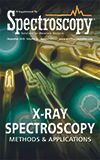Applying EDXRF to Agricultural Analysis
Special Issues
EDXRF offers potential advantages over ICP-OES for elemental analysis in agriculture. Karen Daly and Anna Fenelon of the Agriculture and Food Development Authority of Ireland spoke to us about their work investigating agricultural applications of this technique.
Elemental analysis serves many purposes in agriculture. For example, farmers need to ensure the nutritional value of grass they feed to cattle, and also need to know that dairy sludges used as fertilizer have the right nutrient value and will not harm fresh waters, such as through toxic heavy metals. Traditionally, these analyses are conducted using inductively coupled plasma–optical emission spectroscopy (ICP-OES), but energy-dispersive X-ray fluorescence (EDXRF) offers some potential advantages over ICP-OES for these applications. Karen Daly and Anna Fenelon of the Environment and Land Use Programme at Teagasc, the Agriculture and Food Development Authority of Ireland, have been studying the use of EDXRF in agriculture. They recently spoke to us about their work.
Laura Bush
Y
ou recently presented work at the 2019 SciX conference on the use of energy-dispersive X-ray fluorescence (EDXRF) spectroscopy for the elemental characterization of pasture-based agricultural samples (1). Why did you choose EDXRF for this analysis rather than wavelength-dispersive XRF (WDXRF)?
We wanted to explore the potential applications of XRF for agricultural and environmental samples, and felt that the EDXRF with a Cartesian geometry and polarized system provided the detection limits and robustness we needed for the sample types that we handle. The WDXRF systems on the market are more expensive, and, for this type of exploratory work in a research environment, EDXRF was the most suitable system for our needs.
What results did you achieve, and how did those results compare in terms of precision and accuracy to those you have obtained using inductively coupled plasma–optical emission spectroscopy (ICP-OES)?
We have used EDXRF on a range of agricultural and environmental samples, and have been very impressed with how our results compare with conventional wet chemistry methods. We have found that the level of accuracy and precision that we achieve depends on a number of factors, such as sample preparation, calibration methods, and matrix effects. For example, grass samples were analyzed as a pressed powder with excellent agreement with traditional methods; however, we found that soils and skimmed-milk powders and dairy sludges gave us better results when presented as a pressed pellet, sometimes using a binder. Our initial work began with grass samples to see if the technique could capture some of the nutrients and trace elements with similar accuracy and precision that our digestion–ICP-OES method produces, and we found that by developing our own calibrations, empirically, or with matching libraries, the results for elements such as P, K, Ca, S, Mg, Cu, Zn, and Mn were in excellent agreement with digestive methods using ICP-OES. For major elements such percent P, K, Mg, and Ca, EDXRF values were within 0.03, 0.32, 0.02, and 0.06 of ICP-OES values, respectively, given that the database of over 600 samples spanned ranges from 0.1 to 3% across these elements. This was our first study using EDXRF for agricultural samples that we published in 2017 (4). Since then, we have examined the precision and accuracy of EDXRF for other materials, such as soil, milk powder, and dairy waste sludge, and have adapted our sample preparation and calibration methods to suit the sample types, so that we achieve the best agreement with traditional methods.
You have also studied the use of EDXRF to analyzed dairy processing sludge (2). Why does such sludge need to be analyzed, and for which elements? What action might be taken based on these results?
Dairy sludge is a waste product derived from processing raw milk into other products, such as cheese and yogurt, and it has enormous potential as a source of nutrients owing to its high P and N content, and as a use for this waste stream so that it can become part of the circular economy in agri-food systems. However, before it is applied to land, farmers and producers need to know the nutrient content of the sludge for the rate of applications to be optimized, and to avoid any environmental losses of N and P that have detrimental effects on fresh waters. In addition, to date, there have been very few studies characterizing this material for heavy metals and other elements that could be toxic to plants. We characterized a number of different sludge types, for 12 elements: P, K, Mg, S, Al, Cu, Fe, Na, Cu, Mn, Zn, and Ni. The range of concentrations of major nutrients such as P, K, Mg, and S were of the order of 15–280 g/kg, and this high concentration range allowed us to use the theoretical approach to calibration, known as the fundamental parameters (FP) approach, which gave us the best agreement with ICP values. The trace elements Cu, Mn, Zn, and Ni were present in mg/kg quantities and the best agreement with ICP-OES values was observed when we applied a matching library to the FP calibrations for these elements.
In your study, what specific data analysis approach did you use for calibrating your results (to convert intensities into concentrations)?
In our system, we worked with concentrations that were calculated from intensities, and we compared the instrument concentrations with those that we had gathered from ICP-OES analysis. First, we tried correlation and regression models to compare EDXRF with ICP-OES, but found that while there was good correlation for a lot of elements across both methods. We found some bias exhibited for EDXRF in some elements that was not immediately obvious using correlation, until we plotted the data with a 1:1 line of perfect agreement. When we observed the bias, we explored the use of agreement statistics instead, and this provided the best outcome for our data. Agreement statistics were able to tell us how close our EDXRF values were to ICP-OES values and what bias, if any, was there, and the type of bias; that is, whether it was fixed or proportional. From this, we were then able to correct for bias where it existed, and develop our method to account for bias correction.
What results did you see in this study? And what conclusions did you reach about the feasibility of using EDXRF for this type of analysis?
Our conclusions so far about EDXRF tell us that it is a versatile system for the types of samples we encounter in agricultural research. We have presented grass, soil, milk powders, and dairy waste to EDXRF for a wide range of elements. The instrument we have allows us to create our own bespoke calibrations to improve results where needed, and also to correct for any bias that we suspect might be in the data. We have used empirical calibration and matching libraries to augment the FP approach, and have seen improvement in accuracy and precision with only a few matching library samples. Furthermore, the benchtop EDXRF instrument we used provided reliable and repeatable results, which we looked at in one of our publications (4). One observation on soils, so far, is that for some elements, we found that ICP-OES following aqua regia digestion underestimated element concentrations, so we are now looking at certified reference materials as a way to examine the agreement and accuracy of EDXRF for soil analysis. For the other materials that we have mentioned, we have found that if elements are present in high concentrations, the FP calibrations work well, but trace elements in low concentration often need either an empirical calibration or a few samples as a matching library to bring the values in line with ICP-OES.
If one were to use EDXRF for this type of analysis, would portable approaches be viable?
We are planning to look at portable XRF to see what these systems can offer us in terms of in situ and on-site analysis of agricultural samples.
In a previous study, you evaluated the use of EDXRF for the determination of copper, manganese, zinc, and sulfur in grass used for cattle grazing (3). Why is such analysis important? What are the advantages of using EDXRF for this application?
In agriculture, farmers are interested in the nutrient and trace element status of the grass they grow, so that it meets the dietary requirements of the grazing animals, and if any deficiencies in grass are indicated, they can take action and use feed supplements to avoid any health issues with their animals. The advantages of using EDXRF for this type of analysis is that results can be returned to farmers more rapidly than conventional analytical methods allow, as bottlenecks in commercial laboratories for these types of analysis are often common, and delay the transfer of important results about grass nutrient and trace element status back to farms.
In the study, you compared the theoretical (FP or standardless) approach to calibrating spectroscopic intensities with empirical or standards-based procedures. What did you find?
We developed empirical calibrations by using an archive of samples with known concentrations as standards, and we used this method for grass, milk powder, and dairy waste sludges. The advantage of having standard samples is that you can improve the calibration if the theoretical approach gives results that are not as accurate as you would like. However, we found that whether you need to calibrate with standards or use the standardless (theoretical) method depends on the element and type of material or matrix that you are analyzing. From our experience, low concentrations of elements are possibly best determined using empirical standards (or matching libraries) whereas elements with high concentration values in a material can be determined using standardless (FP) calibrations.
What approach did you develop for correcting bias? Were you able to thoroughly evaluate the accuracy of this approach?
We used Bland-Altman plots to calculate any bias that existed between EDXRF and ICP-OES, and also visualization of the scatter plots with the 1:1 line of perfect agreement to see in which direction the bias was observed, and, whether bias was fixed across the range or proportional to values as they increased. For fixed bias, we simply used the bias value from the Bland-Altman plots as a correction factor. For proportional bias, we used the regression equation (as long as it was a good model) between the methods to predict one value from another and we described this in a paper last year (3).
How do the time and cost involved in EDXRF analysis compare to those for ICP-OES analysis? Are there important tradeoffs?
We discussed this in one of our papers (4), and estimated that the costs of running acid-digest ICP analysis (including microwave digestors, argon gas, reagents, and certified standards, and so on) outweighs the running cost of most benchtop XRF spectrometers. Furthermore, using EDXRF eliminates the need to dispose of hazardous waste reagents and provides results more rapidly.
What are your next steps in this work?Our plans in this area are to try to develop a field method for portable XRF, and to examine the role of EDXRF for characterization of dairy sludges on-site before land application.
References
(1) A. Fenelon, M. Croffie, and K. Daly, “The Use of Energy Dispersive X-ray Fluorescence Spectroscopy for Elemental Characterisation of Pasture Based Agricultural Samples,” poster presented at the 2019 SciX conference, October 16, 2019.
(2). K. Daly, O. Fenton, S.M. Ashekuzzaman, and A. Fenelon, Process Safety Environ. Protect. 127, 206–210 (2019). https://doi.org/10.1016/j.psep.2019.05.026
(3). K. Daly and A. Fenelon, Appl. Spectrosc. 72(11), 1661–1673 (2018). https://doi.org/10.1177/0003702818787165
(4) K. Daly and A. Fenelon, Irish J. Agric. Food Research56(1), 1–11 (2017). DOI: 10.1515/ijafr-2017-0001

Karen Daly is a research officer for soil and catchment science in the Environment and Land Use Programme, at Teagasc, the Agriculture and Food Development Authority of Ireland, in Johnstown Castle, in Wexford, Ireland. Her work on nutrient cycling in soil focusses on soil phosphorus cycling in agricultural soils and the mechanisms of uptake and release in different soil types. Her research also includes the application of soil spectroscopy for the prediction of soil properties.

Anna Fenelon is a research technologist at Teagasc. Her work focuses on developing methods for agricultural analysis using spectroscopy techniques. Direct correspondence to: SpectroscopyEdit@mmhgroup.com

AI Shakes Up Spectroscopy as New Tools Reveal the Secret Life of Molecules
April 14th 2025A leading-edge review led by researchers at Oak Ridge National Laboratory and MIT explores how artificial intelligence is revolutionizing the study of molecular vibrations and phonon dynamics. From infrared and Raman spectroscopy to neutron and X-ray scattering, AI is transforming how scientists interpret vibrational spectra and predict material behaviors.
Advancing Corrosion Resistance in Additively Manufactured Titanium Alloys Through Heat Treatment
April 7th 2025Researchers have demonstrated that heat treatment significantly enhances the corrosion resistance of additively manufactured TC4 titanium alloy by transforming its microstructure, offering valuable insights for aerospace applications.